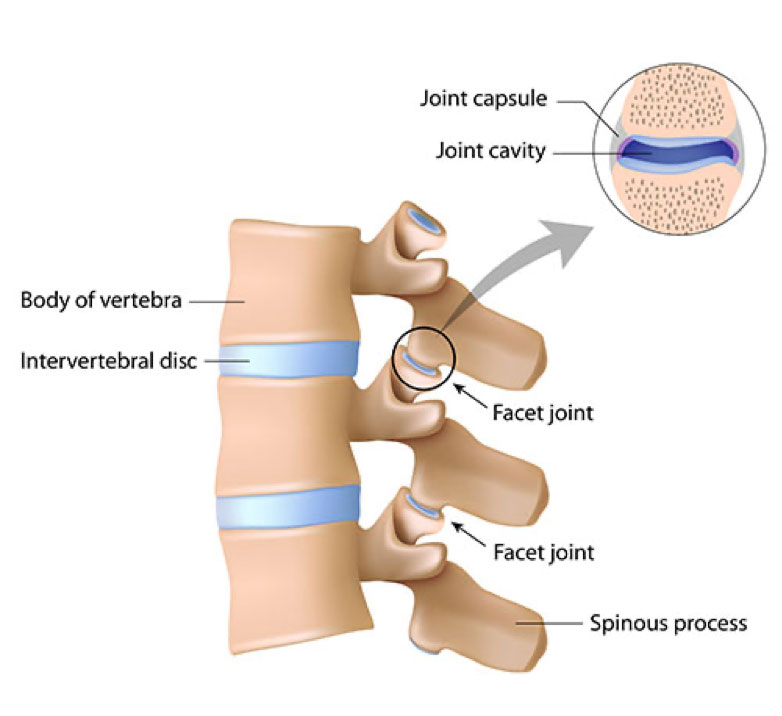WHAT CAUSES NECK PAIN & TREATMENTS AVAILABLE FOR IT
Most people experience neck pain or stiffness within their life and for many, it is a common recurrence. In many cases, poor posture and overuse of the neck are the main causes. Working at a desk or looking down at your phone for too long without changing position (tech neck), sleeping with your neck in an improper position, or using a bad pillow may contribute to your neck pain. Neck pain may also be caused by injury from a fall, contact sports, jerking your neck during exercise or whiplash. Patients who suffer from scoliosis may also have recurring neck pain due to the abnormal nature of their vertebral column.
WHAT ARE COMMON SYMPTOMS OF NECK PAIN?
The type of neck pain you are experiencing is crucial to understanding the root of the problem. Dull and pressure-like pain in the upper neck can cause headaches and make your neck feel stiff and tender. If your pain is sharp, sudden, and random, it is likely due to muscle spasms in the neck. Muscle spasms are painful contractions of a muscle, which can cause tightness and the inability to move your head in one or more directions. If you have soreness, tender knots (trigger points), and swelling in your neck, you may have a muscle sprain, strain, or tear. If you are experiencing pain in your cervical vertebrae (neck bones), the bones may be fractured or weak. Facet joint pain can easily be mistaken for vertebral pain. Facet joints, which connect the vertebrae to each other, are located on the top and bottom of each vertebra. Facet joint pain can be caused by many things, such as arthritis, fibromyalgia, degenerative disc disease, etc. Deep, sharp and aching pain within a facet joint typically feels even worse with movement of the neck or when pressure is applied. Nerve pain causes sharp or dull and fleeting or constant pain, along with the feeling of pins and needles or burning sensations in the area. Lastly, referred pain occurs when you feel the pain in one place, but it is caused by another part of your body being injured. For example, patients with temporomandibular joint disorder may experience pain in the neck, even though a slipped disc in the jaw is the root issue.

WHAT DIAGNOSTIC TESTS ARE PERFORMED TO DIAGNOSE?
The first test that your doctor will likely order is an X-ray, which is a scan that uses electromagnetic energy to create images of internal tissues, bones, and organs. An X-ray will allow your doctor to see what is really going on within your vertebral column. If your X-ray seems to be normal, but you are not getting better after chiropractic treatments, your doctor may order an MRI. If your X-ray comes back severely abnormal, your doctor will likely order an MRI. An MRI is a scan that uses radio waves and a magnetic field to obtain more detailed pictures of your spine, the surrounding tissues, and organs.
WHAT ARE POSSIBLE DIAGNOSES OF NECK PAIN?
Cervical spondylosis, cervical spondylolisthesis (anterolisthesis or posterior listhesis), cervical sprain/strain, cervical degenerative disc disease, cervical disc herniation/radiculopathy, reversal of cervical curve (cervical lordosis), whiplash, and subluxation/segmental dysfunction are all possible diagnoses of neck pain. Other possible diagnoses of neck pain include spinal stenosis, scoliosis, fibromyalgia, osteoarthritis, rheumatoid arthritis, psoriatic arthritis osteoporosis, and lupus.
WHAT ARE THE BEST OPTIONS FOR TREATING NECK PAIN?
Based on an examination by your chiropractor, treatment plans may include a variety of treatment options. First and foremost, receiving chiropractic adjustments on a regular basis is the most effective holistic treatment. Your chiropractor will realign your spine and remove the kinks in your nervous system, just like removing the kinks in a garden hose. These spinal adjustments allow your nervous system to flow properly, which reduces pain and inflammation naturally. Your doctor will determine whether you should apply ice or heat to the affected area, which may be combined with electric muscle stimulation therapy. Ultrasound and/or laser therapy may also be suggested, as both of these passive modalities heal the tissues deep within. Physical rehabilitation combined with chiropractic care is the best option for most patients suffering with neck pain. Physical rehabilitation may include stretching, strengthening, and stabilizing the body through exercises tailored to fit your specific needs by your chiropractor. Manual massage, cupping, and scraping therapies may all help to release the lactic and uric acid build up within your neck muscles. If the previously mentioned therapies do not create positive results or cause your symptoms to worsen, pain management will likely be the next best option. Pain management includes the use of medications prescribed by a medical doctor, such as pain killers and muscle relaxers, which may be accompanied by steroid injections. Using certain medications can put some patients at risk for becoming addicted, so it is extremely important to take your prescribed medication as directed and to pay attention to the way your body reacts to it. If unavoidable,the last resort for a patient would be surgical options. Depending on your diagnosis, surgical procedures may include anterior cervical corpectomy with fusion, laminectomy, laminoplasty, anterior cervical discectomy with fusion (ACDF), artificial disc replacement, posterior cervical laminoforaminotomy.
